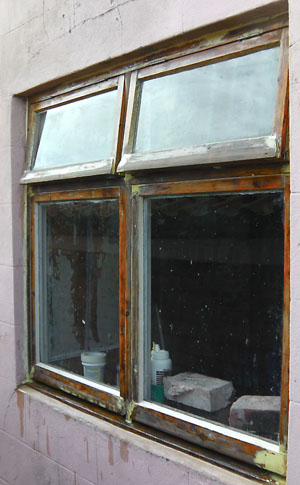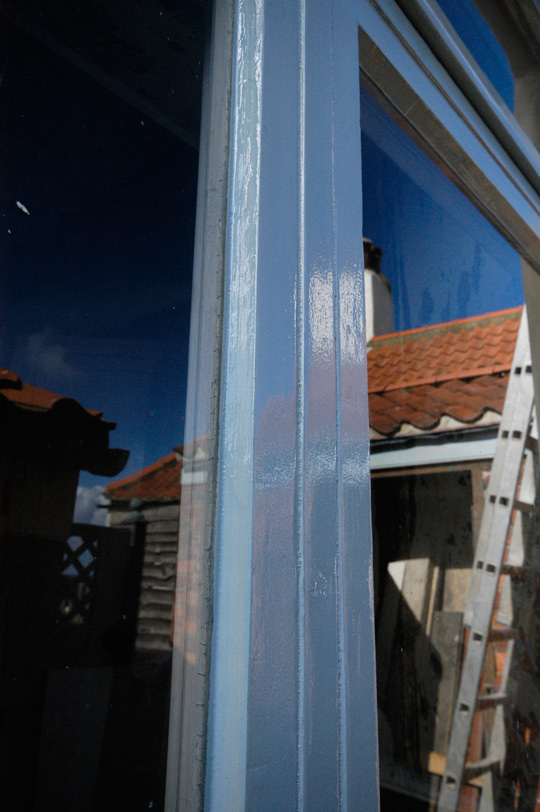Priming and Painting repaired windows
If you've arrived here direct from a search, you might want to read the full set of pages starting here
First let me warn you, the old timber and new timber / filler will settle in relation to each other so as the old timber dries out you might get cracks at the joints. If you can put off painting for a few weeks you can re-fill beforehand. Otherwise you can expect to have to check and do some remedial work.
With this in mind I try and prime straight away and leave the top coats for later.
Convert to Linseed Oil Paints
I’ll be straight with you, I’m a convert to Linseed oil Paints – If I get any requests, I’ll cover it in detail later but for now here’s the quick pro’s and con’s.
Linseed oil Pro’s
- Priming is with just linseed oil.
- It soaks well in to the timber norishing and hardening the wood surface.
- Its breathable “microporous” so moisture in the wood can always dry out.
- It’s lovely to work with and even smells good.
- I’ve never know it crack or peel
- It can be rejuvenated after a few years with a coat of linseed oil
- Wet brushes can be stored or easily cleaned out
- And if you care it’s environmentally friendly.
Linseed oil Con’s
- It’s no good as a gap filler and doesn’t hide poor preparation.
- It’s more difficult than synthetic paint to get an even gloss finish
- It takes more time to dry, so the weather can get in the way.
- It's not available from normal retail outlets
On balance the longevity of linseed oil paint is worth any extra time it might take to apply.

Windows primed with linseed oil can be left as they are with no top coat alowing time for timber moisture levels to equalise. Painted with linseed oil paints the finsh should last for around 7 years, then it can be rejuvinated with a brushing of linseed oil.

Repaired window with 3 coats of duck egg blue linseed paint.

High Gloss finish on linseed paint from "Linseed Paint Company". Paint from "Holkham" is more of an eggshell finish.

Each coat has to be thin and so can look a bit disapointing on the first coat. 3 coats give a density of colour.

Linseed paint from "Holkam" more of a Matt or eggshell finish.
Conventional Paints
Having said all that about linseed paints there are occasions or limitations where normal, modern paints are going to be used. I’ll not go in to details but just offer these few tips.
- Preperation is paramount. Bare wood is by far the best.
- Pick a quality microporous paint system
- Then follow the instruction from priming to painting.
- Don’t do too many or thick coats or you will end up losing the benefit of the microporous paint structure
- Make sure the paint laps over the edge of any putty and on to the glass.
If the window is detailed well and the painting is done properly the repairs should last for many years. However it’s worth checking at least once a year to ensure water isn’t soaking in to timber through any gaps or cracks.
Next: That's it job done time for brew, stand back and admire your handy work.
Previous: Priming and painting
Please post any questions, comments or suggestions over on the blog
Please post any questions, comments or suggestions over on the blog
Window repairs intro and index
Investigating the extent of damage
Making good a timber frame or sash
Other Window problems and considerations including sash window double glazing
Filling and sanding window repairs


